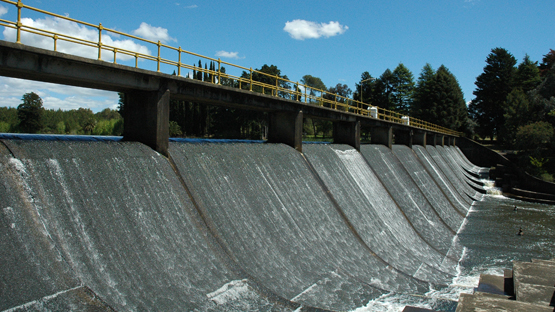Achieving the Sustainable Development Goals to end extreme poverty by 2030 will require about $4.5 trillion annually, far more than multilateral development banks or donors can provide by themselves. To face this challenge, the World Bank Group adopted the Maximizing Finance for Development (MFD) approach, which entails working with governments to crowd in the private sector while optimizing the use of scarce public resources. This approach is guided by the Hamburg Principles adopted by the G20 in 2017 and builds on the substantial experience across the institution.
Three decades of World Bank support, together with other development partners, have helped transform Obras Sanitarias del Estado (OSE) from an inefficient water and sanitation services provider into a well-regarded public utility that provides drinking water to 98 percent of Uruguayans and sanitation to over 51 percent (Sanitation coverage excludes the department of Montevideo where the municipality provides the service.) Its improved financial performance earned OSE a favorable investment grade credit rating that enabled it to tap capital market financing through bonds in 2017, helping the utility sustain investments to achieve universal water and sanitation access.
Development Challenge
Water and sanitation services in Uruguay in the 1980s was inefficient and provided limited coverage. Labor productivity was low, with 12.7 employees per 1,000 connections in 1987, and water losses were as high as 47 percent due to aging pipes and illegal connections. Access to drinking water covered 75 percent of the population and sanitation coverage was only 27 percent. Further challenges came from severe floods and droughts between 2007 and 2010 and from intensification of agriculture, both of which threatened water supply and quality. OSE addressed these challenges through institutional reforms and infrastructure investments. However, it faced a financing gap to meet its annual as well as future investment needs.
The MFD Approach
The World Bank’s multifaceted support to the water sector and OSE over the years supported the utility in strengthening its physical infrastructure, its efficiency, and its management practices. These efforts significantly contributed to improving OSE’s financial performance and creditworthiness as well as its reputation. This in turn enabled the utility to obtain private sector financing in 2017 through a local currency bond series on Uruguay’s capital markets.
Better Institutional Arrangements and Regulation to Sustain Financial Performance
The World Bank, a partner for water and sanitation in Uruguay since 1988, has provided more than $141 million in loans that have enhanced the sector’s overall financial sustainability and expanded services. These programs also targeted support for water loss reduction, established new environmental and social units at local levels, and implemented a performance benchmarking system. Customer service has gradually improved, as have accounting and service quality regulations for the sector.
In the early 2000s, Uruguay’s government undertook decisive reforms that improved water and sanitation services. It established stricter accountability by separating policy functions from those related to service provision. OSE was assigned responsibility for providing water supply and sanitation services to the whole country, apart from sanitation services in Montevideo.
The World Bank’s support also assisted in the expansion of sanitation networks in rural communities through the construction of new wastewater treatment plants. Current efforts also support protecting the Santa Lucia river basin that provides drinking water to more than 60 percent of Uruguayans.
Today, OSE continues the upward trajectory of Uruguay’s water and sanitation quality and resilience through its $84 million Sustainable and Efficient OSE Project. The project includes a $42 million World Bank loan aimed at improving strategic planning, risk management capacity, and non-revenue water reduction to sustain operational efficiency and financial performance.
Financing a Creditworthy Utility
While building its institutional capacity, OSE estimated it needed $100 million annually in investments to achieve universal access by 2020 and reduce non-revenue water. In 2017, it launched a bond program to raise financing from the domestic capital markets, a key step made possible through the earlier improvements and the BBB+ investment grade credit rating it obtained that year. OSE successfully issued 22-year bonds—Uruguayan peso 250 million inflation-indexed units worth $32 million with a 3.95 percent nominal interest rate. The main investors were local pension funds and thanks to OSE’s favorable credit rating, the bonds were fully subscribed without the need for the support of development finance institutions. A year later, in April 2018, OSE’s credit rating improved to A- and OSE is planning two more bond issues over the next three years.
The funds that OSE raised from bond financing have reduced the utility’s borrowing costs and improved its debt profile with regard to foreign exchange risk and loan tenure, giving OSE flexibility in executing its investment plans for 2017-2020. These funds will complement the $550 million allocated to the sector by the government under the National Strategic Infrastructure Plan 2015−2019. By the end of 2018, OSE had invested $386 million of that allocation.
